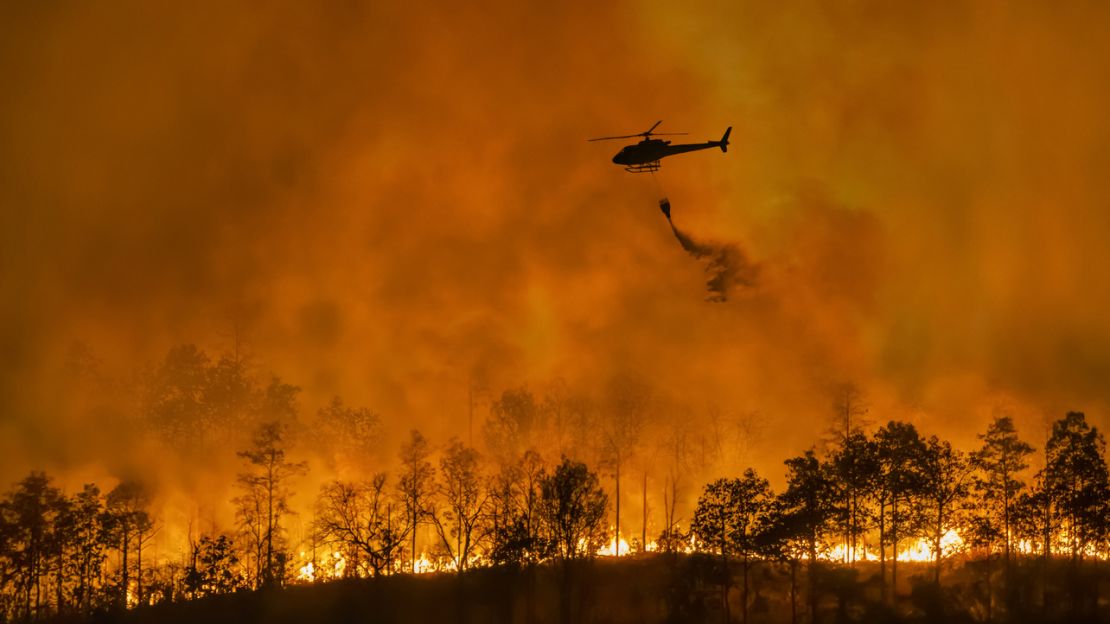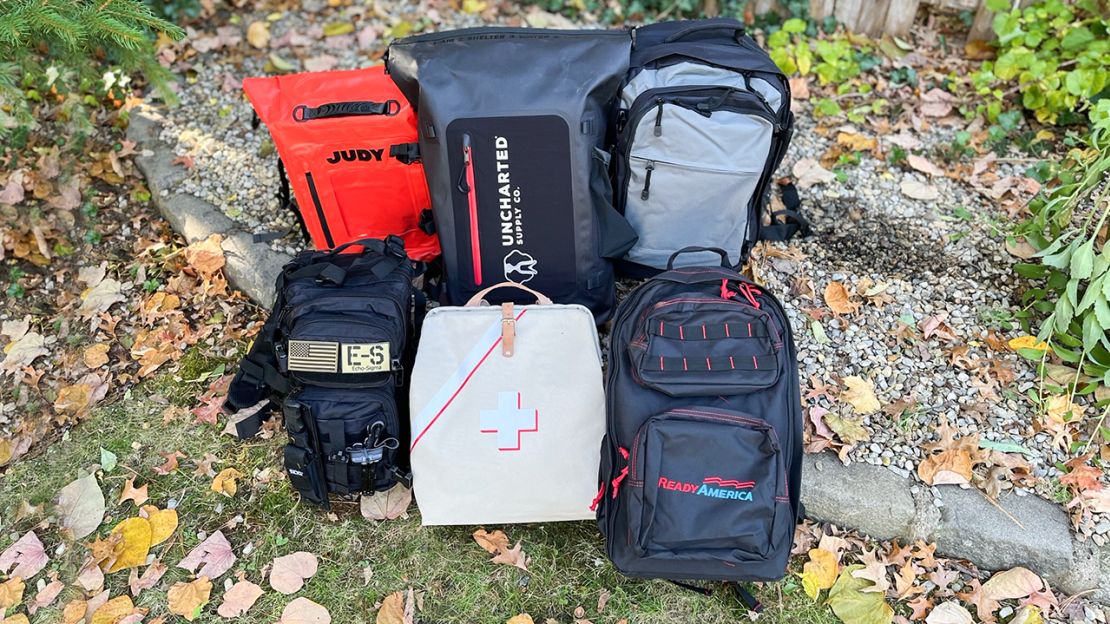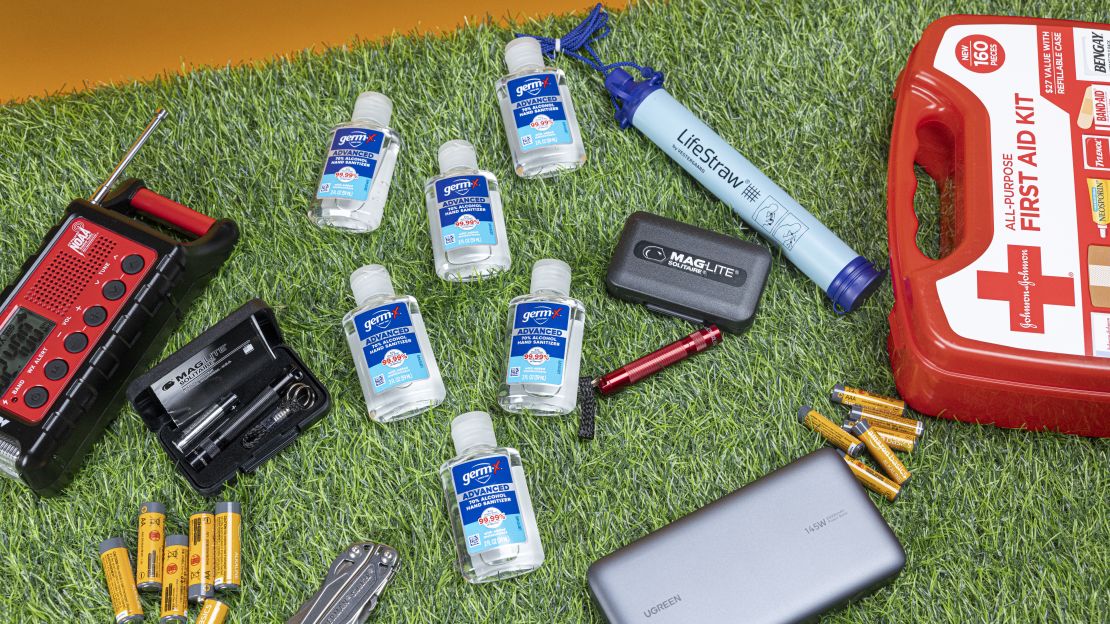
Wildfire preparation quick picks
An easy-to-use water filter: LifeStraw Personal Water Filter
A radio that doubles as a charger: Midland ER310 Emergency Radio
An editor-favorite mask: 3M Aura Particulate N95 Respirator 9205+, 3-Pack
Our favorite high-capacity power bank: UGreen 145W Power Bank
A prepacked go bag: Uncharted Supply Co. The Seventy2 Pro Survival System
Fires burn millions of acres across the US every year, destroying homes, claiming lives and causing billions of dollars in damage. With the stakes so high, wildfire preparation is crucial, especially if you live in a state like California, where every fire season brings smoky air, road closures and evacuations.
Below is a concise list of steps you can take to prepare your family and home. We’ve compiled this information — including wildfire preparedness essentials — after talking to experts from two fire departments and the American Red Cross. We’ll also point you to trustworthy natural disaster preparedness resources, such as the Department of Homeland Security’s (DHS) Ready.gov emergency and disaster site.
If there’s one thing you should take away from this guide, it’s that any prep counts, even if it’s just signing up for local emergency alerts.
How to prepare for a wildfire

Sign up for emergency alerts
“Having a plan and being prepared to evacuate maximizes your ability to leave safely,” says Fredrick Fielding, a public information officer at the Los Angeles County Fire Department.
Planning starts with signing up for emergency alerts in your area so you’re aware of weather and fire conditions, red flag warnings and evacuation orders.
The main source for natural disaster updates is Wireless Emergency Alerts (WEA), a national warning system that automatically pings compatible phones. While you don’t have to sign up for WEA, Denise Everhart, a division disaster executive at the American Red Cross, recommends ensuring you have the alerts enabled (check your smartphone’s notification settings).
Social media is another valuable resource where you can follow your local fire department and law enforcement for updates. “X or Twitter is really where a lot of public information officers will start putting out that information in real time, which allows the media to pick up, but also we encourage the public to follow those accounts,” says Scott Safechuck, a public information officer at the Santa Barbara County Fire Department.
For a shortcut, you can also download the Red Cross’ Emergency: Severe Weather App from the Google Play or App Store (or text “GETEMERGENCY” to 90999). With Red Cross shelter maps, emergency alerts and planning resources, it’s a comprehensive resource for natural disaster prep. Watch Duty’s wildfire maps and notifications — available from the Google Play and the App Store — are another invaluable resource.
It’s worth being prepared year-round as well because you never know when wildfires will strike. “One common misconception in Southern California is that when the weather cools down the threat from wildfires also dies down, but fires are more receptive to high winds and low humidity,” Fielding says. That means that fire season can persist through fall and winter until the area receives heavy rainfall.
Make a plan
If smoke is overhead and the fire is closing in, you won’t have time to think. “You get panicked at the end. You get in a hurry, you forget things,” Everhart says. That’s why you need an action plan.
Plans will differ depending on your family’s needs, but each one should address the “Six Ps”:
- People and pets: Have an evacuation plan for your loved ones. That includes identifying several clear exit routes and discussing how you’ll evacuate your pets.
- Papers, phone numbers and important documents: Know where important documents like insurance policies and trusts are, and keep a list of important emergency contact numbers.
- Prescriptions, glasses and other health care essentials: Similarly, you’ll want to know where health care necessities are, so you aren’t scrambling to gather important medications.
- Pictures and other irreplaceable items: Keep track of prized photographs and other sentimental items so you can grab them quickly.
- Personal computers and hard drives: Remember to grab your laptop and external hard drives.
- Plastic: Bring credit cards, debit cards and cash.
Beyond establishing an evacuation plan with your family, Everhart recommends connecting with your neighbors. “We’re seeing more and more communities become aware of the wildfire threat,” she says, “and so you might have resources in your own backyard.”
Create a defensible space
Consult any fire preparedness guide and you’ll find a section about creating a defensible space. That means clearing potential fuel around your home — like grass, brush, firewood and propane tanks — while also using nonflammable landscaping features to harden your home.
What’s more, defensible space guides typically break recommendations into the three zones:
Zone One (within 30 feet of your home): Clean your gutters and remove all flammable materials, from dry brush to wood piles and combustible patio furniture. Use fire-resistant landscaping such as pavers or gravel.
Zone Two (30 to 100 feet from your home): Store combustible patio furniture, woodpiles, fuel tanks and other flammable materials in graveled areas or other fire-resistant, vegetation-free zones. Plant fire-resistant vegetation.
Zone Three (more than 100 feet from your home): Thin, prune and space out vegetation.
For more information, check out the National Fire Protection Association (NFPA) guide or the Federal Emergency Management Agency’s (FEMA) defensible space fact sheet.
Prepare a go bag

Packing a go bag full of emergency supplies is “essential” when it comes to wildfire prep, Safechuck says. You can build your go kit using a checklist from the Red Cross, Homeland Security or your local fire department, but the recommended supplies are generally the same.
Start with a three-day food and water supply (one gallon per person, per day), and then add paper maps of your area, a change of clothes, cash, copies of important documents, prescriptions and glasses.
As far as survival tools go, we’ve pulled from our best-tested guides to compile a list of top-notch products that should be in every go bag.
The best wildfire preparedness supplies



